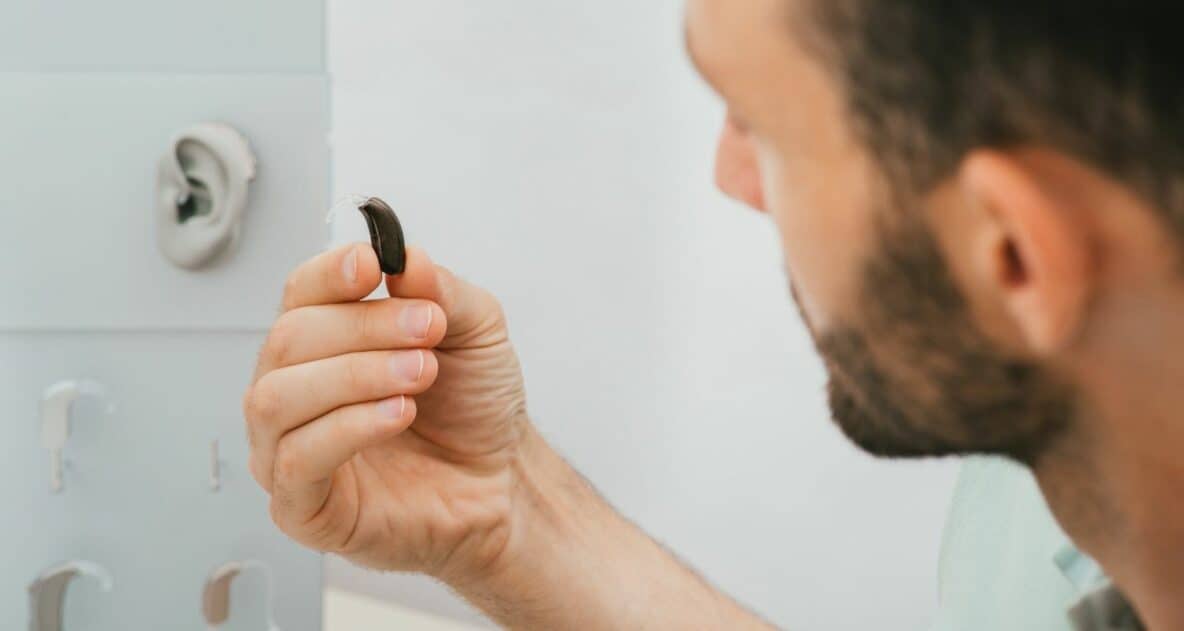One out of eight people in the United States shows hearing loss in both ears. That’s over 30 million Americans. And yet, our culture relies heavily upon verbal communication. That is to say, living with hearing loss can be challenging and may lead to feelings of isolation and depression.
Hearing aids are one of the solutions available to people suffering from hearing loss. While they’re infinitely more powerful and effective than models of past decades, the average person waits a decade before deciding to intervene in their hearing loss. The reasons are many, ranging from cost barriers to stigmas surrounding aging. But you don’t have to wait until your hearing loss becomes unmanageable before exploring hearing aids as a solution.
Causes and signs of hearing loss
There are various causes of hearing loss. Some people are born with hearing loss because of genetic conditions while others lose their hearing due to illness. However, the strongest predictor for hearing loss continues to be age. One in three people over the age of 65 has hearing loss and part of prioritizing your hearing health means scheduling more frequent hearing exams after the age of 50.
Loss due to aging and noise
Aging plays such a large role in acquired hearing loss because the two most impactful aspects upon hearing are simply the natural aging process and excessive exposure to noise. Both of these causes compound so that their damaging effects show up as hearing loss later in life.
Both age-related hearing loss and noise-induced hearing loss affect the sensitive inner ear cells that are responsible for capturing noise from the external world and turning it into sound information. This sound information is transmitted to the brain via the auditory nerve. In the brain, our processing centers make meaning out of sound information.
Due to either time wearing at these cells or the harmful effects of too-loud noise, these cells lose function. They are finite and non-regenerative, so they do not repair themselves or produce new cells as they are lost.
Symptoms of hearing loss
As we lose these important cells, we are less able to ‘hear’ all the noise of the external world. The first signs are subtle, impacting our ability to hear frequencies. We often lose speech clarity first, so it sounds like everyone is always mumbling. Understanding dialogue on television or in films can become frustrating. Phone conversations may prove effortful and difficult. You may find yourself subconsciously avoiding verbal conversations altogether as they become more taxing.
How do hearing aids work?
Hearing aids work by replacing some of the sound information that has been lost to you. They consist of three basic parts: a microphone, a battery and a speaker (also known as a receiver). The microphone works to pick up noise from the external world, which is then amplified and delivered straight into your ear. This eliminates a lot of the ‘effort’ that people with hearing loss find themselves using to carry on conversations and listen to the world around them.
Advancements in hearing aids
In previous decades, all sound was equally amplified by hearing aids. Thanks to the computer revolution, most hearing aids now contain tiny processors which turn the noise into digital code. That code is analyzed and delivered into your ear already filtered so that you’re receiving people’s voices over say, that lawnmower next door. Today’s hearing aids can discern background noise versus what you actually want to hear, only amplifying the good stuff.
Many hearing aids on the market also contain bluetooth technology, which allows your hearing aids to sync up with your smartphone and streaming devices. Your hearing aids might also come with an app that helps you monitor your setting, control volumes (no more teeny tiny little buttons) and even keep tabs on how you are using your hearing aids and track preferred settings like a FitBit for your ears!
Types of hearing aids
There are fundamentally two categories of hearing aids you can select from: in-the-ear or behind-the-ear. Each has their pros and cons.
In-the-ear
These models are typically marketed as nearly invisible or the most discreet option. And that’s mostly true! You can choose the smallest models, which sit entirely in the ear canal, so that you are the only one who knows you wear hearing aids.
One drawback of in-the-ear hearing aids are that they do not work for more severe instances of hearing loss, and work best when hearing loss is mild. They are also more prone to moisture damage because they sit in a damp and waxy environment for most of their lives.
Behind-the-ear
These models break up the hearing aid’s components into two pieces. Typically, the battery and microphone sit behind the ear while the speaker (or receiver) sits in the ear canal. These hearing aids tend to be less prone to moisture damage and wax buildup because they sit outside of the ear canal. They are also great for more severe cases of hearing loss.
Certainly larger than a small hearing aid that can sit entirely within your ear, the majority of these types of hearing aids sit outside the ear completely. However, if visibility is a concern of yours, their relative bulkiness can be easily concealed with your hairstyle.
Ready to try hearing aids on? We’re here to help! Contact us today to learn more about our hearing services, from evaluations to hearing aid fittings.

